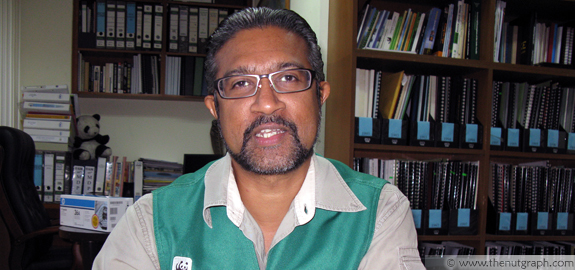
SECOND to the panda logo, Datuk Dr Dionysius Sharma is probably the next most synonymous face associated with WWF-Malaysia. His career with the environmental conservation group has spanned two decades, beginning in 1990 when he started out as a leatherback turtle project officer in Terengganu. Dr Dino, as many call him, became WWF-Malaysia’s executive director and chief executive officer in 2007.
In an interview with The Nut Graph at the WWF-Malaysia Petaling Jaya office on 5 July 2010, Dionysius recalls his childhood of catching snakes in mangrove swamps and playing in the open spaces of the Malay village where he grew up. The innocence of children and their innate sense of equality is something Malaysian society needs to learn if we are to build a common future, he says.
TNG: Where were you born and what were your earliest childhood memories?
Dr Dionysius Sharma: I was born in Malacca on 16 May 1964. I remember growing up in an environment that was clean and where I had friends of all races. At that young age we were innocent, we never wondered about each other’s colour of skin or religion.
I first grew up in a brick house in Bandar Hilir closer to town, and then after that in a Malay kampung where we bathed with water from a well. The back of the house was secondary jungle. My house was the last house in the village, Kampung Ujong Pasir, which was near the Portuguese settlement. The surroundings were sandy and I recall playing in the mangroves not too far away.
In the kampung, I remember having lots of space to play. The house was not fenced up. Space was common and shared. In that space all my friends from the village would play.
I feel sad because the place where I grew up is no more. The mangrove swamps where I used to play and catch snakes and various creatures are all gone. There are condominiums standing where my playground used to be.
Can you trace your ancestry?
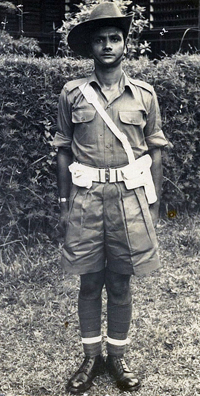
My dad came here from Delhi when he was 17 years old. He enlisted with the Peace Corp with the British and sailed on a ship to Malaya. He served with the British army in Malacca in Kem Terendak as an accountant. My dad never went back to India except for when his mother passed away.
My mum is of Portuguese-Eurasian descent. Although we didn’t stay in the Portuguese settlement but close by, we were a typical Catholic family who observed all the celebrations.
A lot of Portuguese festivals are associated with the sea as the Portuguese were a fishing community and originally a sea-faring people. Their inter-marriage with locals gave rise to the term “Eurasian” but they still spoke the old Portuguese dialect which my mum and grandmother speak but we children didn’t learn. That part of the culture was somehow eroded because I didn’t grow up in the settlement and didn’t have the need to learn the language.
[Our family] mainly spoke English. My dad, being northern Indian, spoke Punjabi, Hindi and English. My mum grew up for a period in Bentong, Pahang, so she also speaks some Mandarin, Cantonese, Hokkien and Tamil, besides Bahasa [Malaysia] and English.
[Although I couldn’t speak Portuguese] I still experienced the culture. [At one time] the state government decided on a twinning exercise between Malacca and the city of Lisbon. The twinning of the two cities was symbolised by the building of similar bell towers, one in Lisbon and one in the Portuguese square in the settlement in Malacca. It was the start of cultural and arts exchanges between Malacca and Lisbon. There were efforts to revive Portuguese culture and re-establish links with Lisbon that began in the 16th century.
I’ve tried to figure out where I belong. Mum’s side goes back further in Malaya to when her ancestors first came here. Whereas my dad left India as a young man in more recent times. My mum was far more assimilated here in terms of the food, culture and practices.
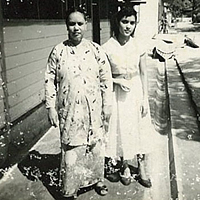
My mum’s people have been here from around 1511 onwards. If you talk to the Portuguese community, you’ll find there’s a lack of stories about the journey across the seas, compared to say, Chinese or Indian migrants [whose histories are] more recent. My mum or even my grandmother wouldn’t be able to say which wave of Portuguese settlers their ancestors came with. There probably were records, of the soldiers and crew who sailed out here from Portugal, but there was also a period of Dutch colonisation, then the British, and the wars in between, so some records may have been lost.
At best, we read books that were written at the time. There’s an excellent book called Eredia’s Description of Malacca. There is a new church that opened in Malacca recently, and it is next to the ruins of a church built by the Portuguese along the Krubong River, a tributary of the Malacca River. Eredia wrote about this church, Our Lady of Guadalupe, and he wrote about two more churches along the same river. I have a mission with some buddies to go look for the ruins of these other two chapels!
What stories by your parents or grandparents do you remember best?
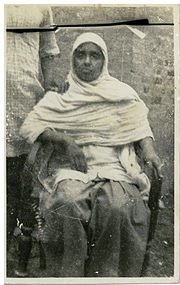
My mum’s family was in Bentong during the Japanese occupation and she told us a lot of stories about how the neighbours would look out for each other. I was told the Chinese families were badly treated by the Japanese, at least during the first wave when they came. But everyone helped each other.
My uncle, my mother’s elder brother, worked in a Japanese camp in the kitchen preparing food for the soldiers. He would bring back leftover food from the camp and my mother’s house was the place where they would distribute food to other people. Most times, people were just eating tapioca. Whatever they could get from the camp was a bonus they would share with other families. The Japanese occupation made people stick together and look after each other.
My dad told stories about his youth in Delhi. He came from a poor family. He was proud of the fact that he was a champion wrestler in the area where he came from. He was trained in Greco-Roman wrestling and was good at it. When he came to join the army, he was frustrated that there was no wrestling. So he took up boxing and became quite good and won several medals. He loved contact sports.
How has your mixed heritage impacted your sense of Malaysian identity?
When registered at birth, I was Indian based on my father’s ethnicity. I grew up with people expecting me to be the kind of Indian they perceived Indians to be, which means one who speaks either Hindi, Punjabi or Tamil, none of which I speak. In school, I couldn’t join the Tamil Language society.
I attended St Francis’ Institution where there were a large number of Portuguese kids who spoke Portuguese when they were together. I didn’t speak the language, and I felt left out. So my siblings and I, from a language point of view, were not able to connect with the Portuguese-speaking kids, and not able to connect with the Indian kids who spoke Tamil.
In university, I was just an Indian by designation in my identity card but spoke none of the Indian languages at all. It was a bit of a challenge, wanting to blend into a community but being unable to connect. I had to find other ways to connect with friends.
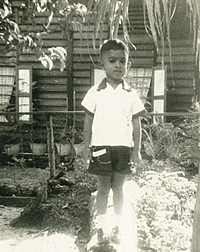
So I developed other interests, like music, literature and debating, martial arts … just to get myself into a range of circumstances where I could mix with people through various means.
As a child in the kampung, I used BM (Bahasa Malaysia) to connect with my friends. When I started school in 1971, I recall how it dawned on me, even at that young age, that I had to master the Malay language. Coming from a family that didn’t speak Malay at all, it struck me that it would be an important language.
The early years and the exposure to the Malay language made us kids realise that your background didn’t matter. The one thing that binds friends together are things like playing football, or camping as Scouts, and cooking your first Maggi Mee together. And all the while, everyone is speaking the Malay language.
A common language as unifier…
Yes, but as kids, things were also simple. In our minds, we understood that we were all the same. We put wealth, race, culture and religion aside. As children, maybe we were naïve about the real world, but at the same time we had no baggage or agenda.
And I wonder, how can this mindset be translated for the adult population and those who govern the country? If the battle is for Malaysia to be in good standing in the global arena, then we must unite because the battle is out there to make ourselves competitive in an ever-changing world.
This is what the country needs now, and we can learn from the children. When children play together, even if they can’t speak each other’s language, they just figure out ways to communicate. People say that children of different races don’t mix with each other but I beg to differ.
In Terengganu, where I worked for WWF on leatherback turtles for six to seven years, I saw all the races come together with no issues at all. [Racial] issues only reside in the media. They don’t reside with the people on the ground. They work, eat and do everything together. You get Chinese [Malaysian]-run shops where they don’t put up “halal” signs but Malay [Malaysians] eat there because they know the food will be halal. There is trust, understanding and mutual respect.
What are your hopes for Malaysia?
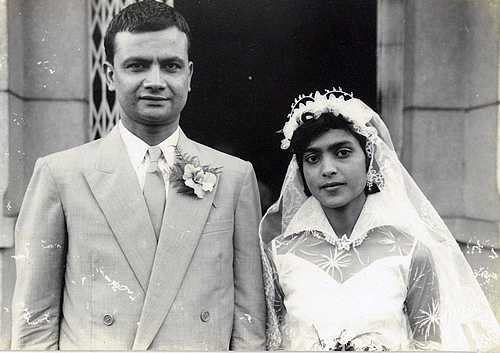
My desired future is one that’s based on all of us agreeing on what is our common future, in the first place. This future cannot be led by skewered political or racial ideologies.
And to get there, there are things we need to make happen.
We need actions to be taken now to institute all the right elements for our desired future. We need to define our roles to bring about this future. And our roles must never be carved out based on race or religion. Only when our roles are based on merit will the best talents come to the fore.
We cannot work in silos. Of course there’ll be sideshows and distractions and you must find a way to manage these. But you want to get the majority of the public buying in into a common vision for the future.
Look at all the facts facing us — the brain drain, people leaving the country, the education system. We’ll need to break down and rebuild. We need leadership today which can walk us through the painful process of breaking ourselves down and putting us back together in a new way. ![]()
The Nut Graph needs your support


damian fernandez says
Hey Dino
Really good to see that you’re a true Malaysian and have a sense of what is right and I can still recall those days with the Sharma brothers.
Son of Lanta Kamek
Dionysius sharma says
Dear Damian,
Wow! How nice to hear from you. It’s been really long ago since we last saw each other. I’m glad that you still recall the good old days with the Sharmas. Let’s find time to meet if you are around. Call me at 012 291 1626 begin_of_the_skype_highlighting 012 291 1626 end_of_the_skype_highlighting.
Cheers bro.
Boo says
Thanks for the articles…”camping as Scouts, and cooking your first Maggi Mee together.”…reminds me of my own childhood days and this YouTube clip:
http://www.youtube.com/watch?v=KR3wGlRcUKo
Dionysius sharma says
Dear Boo,
I realise that there are so many of us who grew up at a time when being a child did not involve playing with the computer but rather the outdoors. Nature was our teacher and she nutured us well!
Cheers
Dino
m.k. says
We Franciscans are very proud of your achievements and what you stand for. Our beloved La Salle Brothers and teachers have taught us well. Keep up your good work while we still have some hope for this country in these turbulent times. God bless Malaysia!
(Guess you know who this is: from Franciscan Club K.L.)
Dionysius sharma says
Dear M.K.,
Thank you sir. We all owe a lot to our parents and to our dear La Salle brothers and teachers; they were just great people and I pray for all of them.
Cheers
Dino
Kong Kek Kuat says
“When children play together, even if they can’t speak each other’s language, they just figure out ways to communicate.”
Funny how I had similar thoughts, recently.
Recently, while I was on a flight to somewhere, I observed a Chinese-Malaysian kid and a white kid from Australasia doing what we would ordinarily see kids do when they are put together – communicating with all the emotional and creative means they possess in order to achieve the primary objective of making friends and having fun. It was very obvious that they both didn’t understand each other verbally, with blank looks from one when the other was saying something. But that didn’t stop them from enjoying themselves; they just focused on doing – or rather, on getting involved in doing the same thing. The point of reference for them was the air-conditioner nozzle overhead, but you could see all the emotional and creative skills they had acquired being cycled through and through in order to connect with each other.
I suppose this is something bigots will never ever understand.
Dionysius sharma says
Dear Kek Kuat,
I really like your story! Use it to get the message across to those that just don’t get it.
Cheers
Dino
TooMuch says
Greeting Dino, The story that you told must bring back a lot of memories for a significant portion of us Malaysians. Reading your comments takes me back to my own primary and secondary school days where we always look forward to PE class and recess time where the whole bunch of class mates irrespective Malays, Indians, Chinese, Eurasians running to the school field to play football. I grew up in Kuala Lumpur and Petaling Jaya and everyone in the national school which I attended at that time spoke mainly English to each other.
50+ years and counting, what has gone wrong for our country? Instead of advancing in face of globalisation, we go backwards. Politicians instead of moving the country ahead is playing with the “us and you” racial and religion game. Shame on those instigators leading the country backwards instead of forward.
Dionysius sharma says
Dear Bro.,
Whenever we can, in whatever way we can, we need to keep influencing the circle of people around us that we have to move forward as a nation. There is no other way….
Cheers
Dino
TooMuch says
Bro Malaysian, Absolutely. We may just have hope yet..
Less fanatism, less racialism, less corruption.
More “we Malaysians”, more accountability. Let’s VOTE for that…
Cheers
HomeTuitionMalaysia says
Thank you for your story. We should not judge anyone based on their race or skin colour. My best friend is an Indian [Malaysian] and I am a Chinese [Malaysian]. Our life values are similar and also different but we enjoy the friendship we have.
As I am introducing tutors […], I also discouraged any racism in choosing the tutors or students according to race. Let us eliminate this from our mindset.
Dionysius Sharma says
Dear Friend,
Thanks for your positive and reinforcing message. Good luck and keep promoting the correct mindset with regard to race and religion here in Malaysia. God Bless.
Cheers
Dino